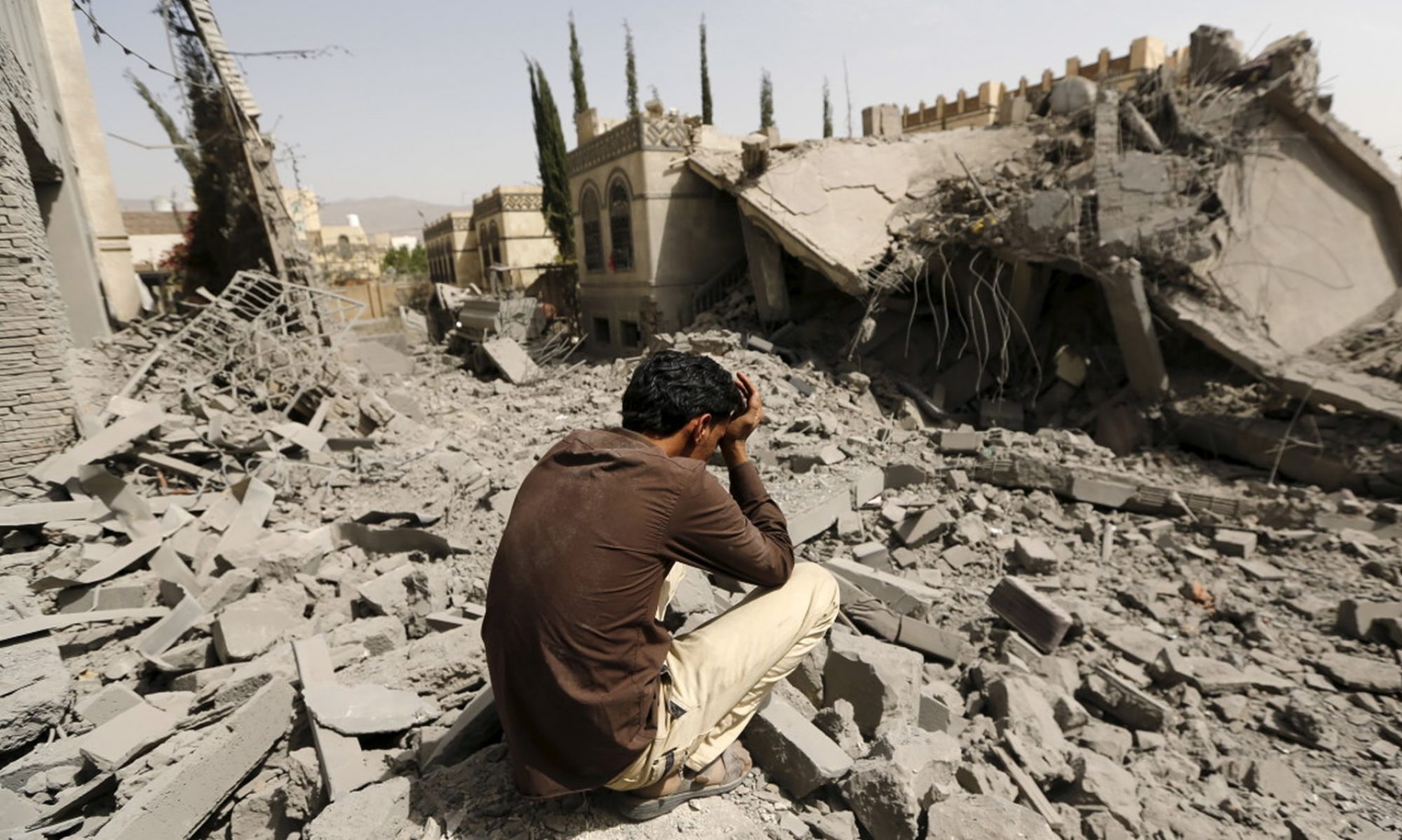This article originally appeared at
TomDispatch.com. To receive TomDispatch in your inbox three times a week,
click here.
In Donald Trump’s go-back-to-where-you-didn’t-come-from America, where the fear of immigrants (as well as their grotesque mistreatment) still seems on the rise, just wait. There’s so much more to come. Climate change has barely begun to hit this planet big time and yet, while there’s much writing about the grim circumstances (including gangs, drugs, and violence) that continue to send desperate Central Americans north to the U.S. border, global warming is also a growing factor in the equation. If the weather destroys the possibility of growing your food, you’ve got to do something else or go somewhere else. In the coming decades, count on one thing: thanks to the way we’re changing our very planet, ever more people are going to be uprooted from their homes and sent wandering in desperation across this globe of ours. And if you think about it, since Donald Trump is so desperately intent on aiding and abetting the intensification of global warming via fossil-fueled projects of every sort, he should really be considered the ultimate “invader” of this country. Given what we know about the reactions of those not forced to flee to those who are — to, in fact, a planet already filled with the displaced and refugees escaping violence on a scale not seen since the end of World War II — expect things to grow worse. More heat, more upheaval, more wars, and whatever turns out to follow the “populist right” on an increasingly unnerved planet, along with potentially 250 million or more displaced people by perhaps mid-century. Given the backstory so far, it’s not likely to be pretty.
This is, in many ways, the situation TomDispatch regular Andrew Bacevich faces in today’s post. He’s now helping to organize the Quincy Institute, a new think tank in Washington dedicated to ending America’s “forever wars” on a planet already on the brink. Recently, he also stumbled across (maybe I should put that phrase in quotes) a partial manuscript written by an unknown author that, from a future vantage point, offers us a look at the fulcrum-like nature of the present moment on a planet called Earth in a country proud once upon a time to be thought of as “united.” Tom
The Great Reckoning
A Look Back from Mid-Century
By Andrew J. Bacevich
[Editorial note: This remnant of a manuscript, discovered in a vault near the coastal town of Walpole, Massachusetts, appears to have been part of a larger project, probably envisioned as an interpretive history of the United States since the year 2000. Only a single chapter, probably written near the midpoint of the twenty-first century, has survived. Whether the remainder of the manuscript has been lost or the author abandoned it before its completion is unknown.]
Chapter 1
The Launch
From our present vantage point, it seems clear that, by 2019, the United States had passed a point of no return. In retrospect, this was the moment when indications of things gone fundamentally awry should have become unmistakable. Although at the time much remained hidden in shadows, the historic pivot now commonly referred to as the Great Reckoning had commenced.
Even today, it remains difficult to understand why, given mounting evidence of a grave crisis, passivity persisted for so long across most sectors of society. An epidemic of anomie affected a large swath of the population. Faced with a blizzard of troubling developments, large and small, Americans found it difficult to put things into anything approximating useful perspective. Few even bothered to try. Fewer succeeded. As with predictions of cataclysmic earthquakes or volcanic eruptions, a not-in-my-lifetime mood generally prevailed.
During what was then misleadingly known as the Age of Trump, the political classes dithered. While the antics of President Donald Trump provoked intense interest — the word “intense” hardly covers the attention paid to him — they also provided a convenient excuse for letting partisan bickering take precedence over actual governance or problem solving of any sort. Meanwhile, “thought leaders” (a term then commonly used to describe pontificating windbags) indulged themselves with various pet projects.
In the midst of what commentators were pleased to call the Information Age, most ordinary Americans showed a pronounced affinity for trivia over matters of substance. A staggering number of citizens willingly traded freedom and privacy for convenience, bowing to the dictates of an ever-expanding array of personalized gadgetry. What was then called a “smartphone” functioned as a talisman of sorts, the electronic equivalent of a rosary or prayer beads. Especially among the young, separation from one’s “phone” for more than a few minutes could cause acute anxiety and distress. The novelty of “social media” had not yet worn off, with its most insidious implications just being discovered.
Divided, distracted, and desperately trying to keep up: these emerged then as the abiding traits of life in contemporary America. Craft beer, small-batch bourbon, and dining at the latest farm-to-table restaurant often seemed to matter more than the fate of the nation or, for that matter, the planet as a whole. But all that was about to change.
Scholars will undoubtedly locate the origins of the Great Reckoning well before 2019. Perhaps they will trace its source to the aftermath of the Cold War when American elites succumbed to a remarkable bout of imperial hubris, while ignoring (thanks in part to the efforts of Big Energy companies) the already growing body of information on the human-induced alteration of the planet, which came to be called “climate change” or “global warming.” While, generally speaking, the collective story of humankind unfolds along a continuum, by 2019 conditions conducive to disruptive change were forming. History was about to zig sharply off its expected course.
This disruption occurred, of course, within a specific context. During the first two decades of the twenty-first century, American society absorbed a series of punishing blows. First came the contested election of 2000, the president of the United States installed in office by a 5-4 vote of a politicized Supreme Court, which thereby effectively usurped the role of the electorate. And that was just for starters. Following in short order came the terrorist attacks of September 11, 2001, which the world’s (self-proclaimed) premier intelligence services failed to anticipate and the world’s preeminent military establishment failed to avert.
Less than two years later, the administration of George W. Bush, operating under the delusion that the ongoing war in Afghanistan was essentially won, ordered U.S. forces to invade Iraq, a nation that had played no part in the events of 9/11. The result of this patently illegal war of aggression would not be victory, despite the president’s almost instant “mission accomplished” declaration, but a painful replay of the quagmire that U.S. troops had experienced decades before in Vietnam. Expectations of Iraq’s “liberation” paving the way for a broader Freedom Agenda that would democratize the Islamic world came to naught. The Iraq War and other armed interventions initiated during the first two decades of the century ended up costing trillions of taxpayer dollars, while sowing the seeds of instability across much of the Greater Middle East and later Africa.
Then, in August 2005, Hurricane Katrina smashed into the Gulf Coast, killing nearly 2,000 Americans. U.S. government agencies responded with breathtaking ineptitude, a sign of things to come, as nature itself was turning increasingly unruly. Other natural disasters of unnatural magnitude followed. In 2007, to cite but one example, more than 9,000 wildfires in California swept through more than a million acres. Like swarms of locusts, fires now became an annual (and worsening) plague ravaging the Golden State and the rest of the West Coast. If this weren’t enough of a harbinger of approaching environmental catastrophe, the populations of honeybees, vital to American agriculture, began to collapse in these very same years.
Americans were, as it turned out, largely indifferent to the fate of honeybees. They paid far greater attention to the economy, however, which experienced its own form of collapse in 2008. The ensuing Great Recession saw millions thrown out of work and millions more lose their homes as a result of fraudulent mortgage practices. None of the perpetrators were punished. The administration of President Barack Obama chose instead to bail out offending banks and large corporations. Record federal deficits resulted, as the government abandoned once and for all even the pretense of trying to balance the budget. And, of course, the nation’s multiple wars dragged on and on and on.
Through all these trials, the American people more or less persevered. If not altogether stoic, they remained largely compliant. As a result, few members of the nation’s political, economic, intellectual, or cultural elites showed any awareness that something fundamental might be amiss. The two established parties retained their monopoly on national politics. As late as 2016, the status quo appeared firmly intact. Only with that year’s presidential election did large numbers of citizens signal that they had had enough: wearing red MAGA caps rather than wielding pitchforks, they joined Donald Trump’s assault on that elite and, thumbing their noses at Washington, installed a reality TV star in the White House.
To the legions who had found the previous status quo agreeable, Trump’s ascent to the apex of American politics amounted to an unbearable affront. They might tolerate purposeless, endless wars, raise more or less any set of funds for the military that was so unsuccessfully fighting them, and turn a blind eye to economic arrangements that fostered inequality on a staggering scale. They might respond to the accelerating threat posed by climate change with lip service and, at best, quarter-measures. But Donald Trump in the Oval Office? That they could not abide.
As a result, from the moment of his election, Trump dominated the American scene. Yet the outrage that he provoked, day in and day out, had this unfortunate side effect: it obscured developments that would in time prove to be of far more importance than the 45th American president himself. Like the “noise” masking signals that, if detected and correctly interpreted, might have averted Pearl Harbor in December 1941 or, for that matter, 9/11, obsessing about Trump caused observers to regularly overlook or discount matters far transcending in significance the daily ration of presidential shenanigans.
Here, then, is a very partial listing of some of the most important of those signals then readily available to anyone bothering to pay attention. On the eve of the Great Reckoning, however, they were generally treated as mere curiosities or matters of limited urgency — problems to be deferred to a later, more congenial moment.
Item: The reality of climate change was now indisputable. All that remained in question was how rapidly it would occur and the extent (and again rapidity) of the devastation that it would ultimately inflict.
Item: Despite everything that was then known about the dangers of further carbon emissions, the major atmospheric contributor to global warming, they only continued to increase, despite the myriad conferences and agreements intended to curb them. (U.S. carbon emissions, in particular, were still rising then, and global emissions were expected to rise by record or near-record amounts as 2019 began.)
Item: The polar icecap was disappearing, with scientists reporting that it had melted more in just 20 years than in the previous 10,000. This, in turn, meant that sea levels would continue to rise at record rates, posing an increasing threat to coastal cities.
Item: Deforestation and desertification were occurring at an alarming rate.
Item: Approximately eight million metric tons of plastic were seeping into the world’s oceans each year, from the ingestion of which vast numbers of seabirds, fish, and marine mammals were dying annually. Payback would come in the form of microplastics contained in seafood consumed by humans.
Item: With China and other Asian countries increasingly refusing to accept American recyclables, municipalities in the United States found themselves overwhelmed by accumulations of discarded glass, plastic, metal, cardboard, and paper. That year, the complete breakdown of the global recycling system already loomed as a possibility.
Item: Worldwide
read more


